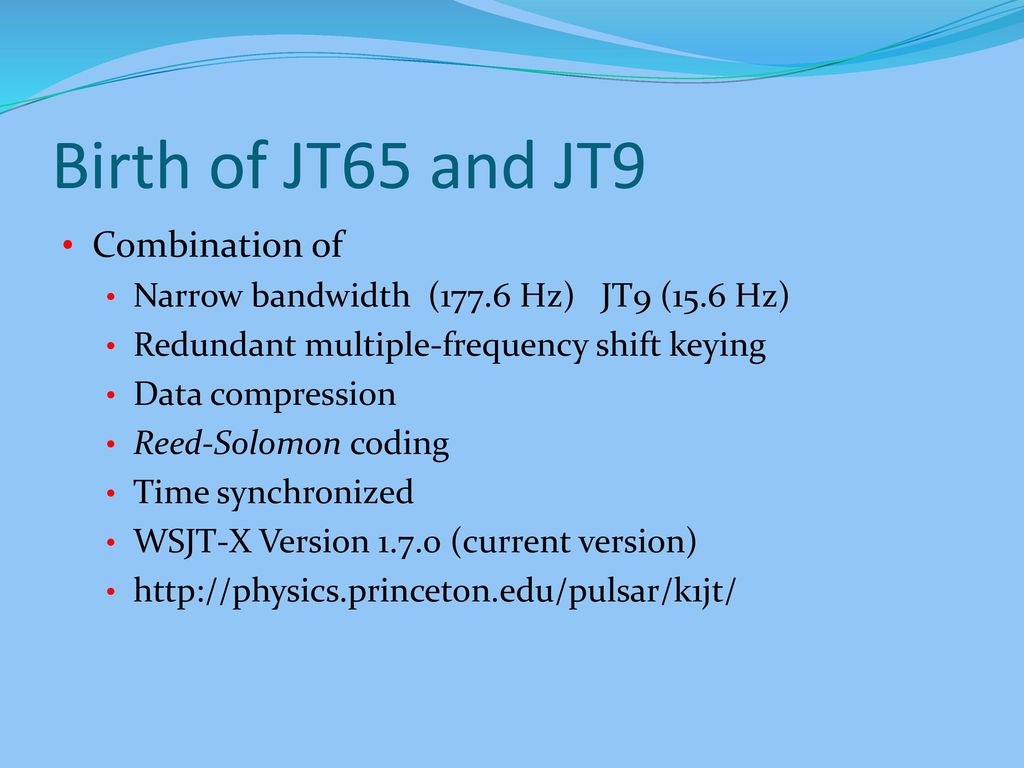
You may also be interested in JTAlert which provides several audio and visual alert types based on decoded callsigns within JT65-HF and WSJT-X.

The new JT9 Yahoo group is rapidly gaining members and is worth joining if interested in this new mode. PSK reporter now shows JT9 spots, so it is possible to see where your signal is reaching even if a QSO does not result from a CQ call. Here is an article by Keith, G6NHU, detailing his early experiences with JT9. So you do not have to entirely dump JT65. The new package called WSJT-X offers a “bi-lingual” operating mode in which you can transmit and receive JT65 and JT9 signals, switching between modes automatically as needed. Note: The HB9HQX-Edition (and the built in JT65-Log) provides receive and transmit messages only in JT65. QSO before, new DXCC or new Grid) with two filter settings, only JT65 or both JT65 + JT9.

You can download the new mode from the Princeton site, by clicking HERE. If you use an external log (like HRD Logbook, WSJT-X or ADIF) you can show statistical informations (e.g. World-wide QSOs are possible with power levels of a few watts and compromise antennas. JT9 in the most common mode will decode signals 2dB weaker than JT65 and it uses just 15.6Hz bandwidth which is less than 10% of the bandwidth that JT65 uses. JT9 is similar to JT65A, but has been totally re-designed for LF and HF work and will decode very weak signals.

Joe Taylor, K1JT has a new digital mode for the low bands that works in a similar manner called JT9. Some of you have noticed that JT65 has mysteriously vanished off the old download sites.


 0 kommentar(er)
0 kommentar(er)
